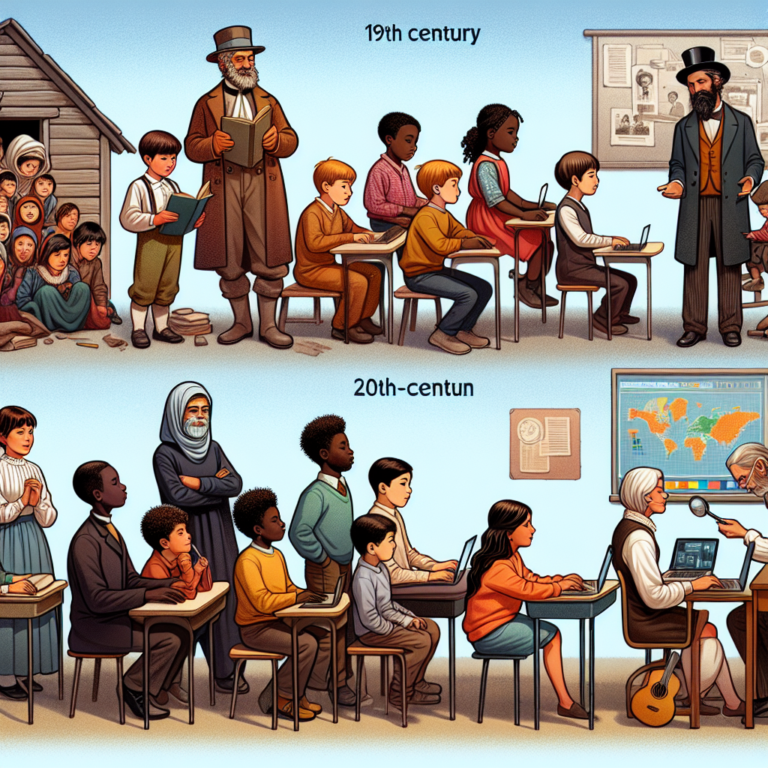The Impact of Canada’s Education Reform
In the ever-evolving landscape of global education, Canada has made headlines with its transformative approach to schooling. Education reform in Canada is not just a buzzword; it’s a comprehensive movement aimed at school improvement and preparing students for the future. As we delve into the subject, we’ll explore the various facets of these reforms, including their goals, implementation, and the effects they’ve had on students, teachers, and the educational system as a whole.
Understanding Education Reform in Canada
Education reform refers to the process of making systematic changes to education policies and practices to improve the quality of education and outcomes for students. In Canada, this has involved a variety of measures, from updating curricula and teaching methods to increasing the focus on technology and the skills needed for the 21st century.
Goals of Canadian Education Reform
The main objectives behind Canada’s education reforms are multifaceted. They aim to:
- Enhance student engagement and learning outcomes.
- Prepare students for a rapidly changing world.
- Foster critical thinking and problem-solving skills.
- Promote equity and inclusivity in education.
- Integrate technology effectively into teaching and learning.
Key Components of Reform
Canadian education reform includes several key elements such as:
- Curriculum updates to reflect modern knowledge and skills.
- Professional development for educators to enhance teaching practices.
- Investments in technology and infrastructure for schools.
- Initiatives to support student well-being and mental health.
- Measures to increase parental and community involvement in education.
Implementation of Reforms in Schools
The rollout of education reform in Canada has been a comprehensive process, involving collaboration between provincial governments, school districts, educators, and communities.
Revamping the Curriculum
One of the most significant aspects of the reform has been the overhaul of curricula across various provinces. These changes have introduced more relevant content, such as digital literacy, and have emphasized skills like critical thinking and creativity.
Professional Development for Educators
To ensure that teachers are equipped to deliver the new curriculum effectively, significant investments have been made in professional development. Training programs and workshops have been provided to help teachers adopt new teaching strategies and use technology more effectively in the classroom.
Embracing Technology
Technology has been a cornerstone of Canada’s education reform. Classrooms have been upgraded with modern equipment, and schools have integrated educational software and online resources to enhance learning and teaching.
Supporting Student Well-being
Recognizing the importance of mental health, reforms have included the implementation of programs and services to support the well-being of students, such as counseling and extracurricular activities that promote social and emotional learning.
Impact on Students and Learning
The effects of education reform on Canadian students have been noteworthy. With the introduction of a more relevant and engaging curriculum, students have exhibited increased enthusiasm for learning.
Enhanced Learning Outcomes
The reform has led to improved academic performance, with students displaying a deeper understanding of concepts and the ability to apply their knowledge in practical situations.
Development of Essential Skills
Students are now gaining skills that are crucial for success in the modern world, including digital literacy, critical thinking, and collaboration. These skills are not only valuable academically but also in their future careers.
Promotion of Lifelong Learning
The focus on inquiry-based learning and problem-solving has encouraged students to become lifelong learners, an attribute that is increasingly important in today’s fast-paced, knowledge-based society.
Impact on Teachers and Instruction
Teachers have also experienced significant changes due to education reform in Canada. With new resources and training, they have been able to enhance their instructional methods and better support their students.
Evolving Teaching Practices
Educators are adopting more student-centered approaches, facilitating learning rather than simply delivering content. This shift has allowed for more personalized and impactful instruction.
Increased Professional Growth
The emphasis on professional development has given teachers opportunities to grow and refine their teaching skills, leading to greater job satisfaction and better outcomes for students.
Collaboration and Support
Reforms have fostered a collaborative environment among educators, where sharing best practices and supporting each other in implementing new strategies has become the norm.
Challenges and Criticisms
While the education reform in Canada has been largely positive, it has not been without its challenges and criticisms.
Resistance to Change
Some educators and stakeholders have been resistant to the changes, citing concerns over the pace of implementation and the adequacy of training and resources.
Equity Issues
There are ongoing concerns about ensuring that all students, regardless of their background or location, have equal access to the benefits of the reforms.
Assessment and Accountability
As the education system shifts away from traditional methods, finding effective ways to assess student learning and hold schools accountable for outcomes remains a challenge.
Future of Education Reform in Canada
Looking ahead, Canada’s commitment to continuous improvement in education suggests that the journey of reform is far from over. The focus will likely remain on adapting to technological advancements, further supporting student and teacher well-being, and ensuring that the education system is inclusive and equitable for all.
Embracing Innovation
The future of education reform in Canada will likely involve embracing innovation in all aspects of schooling, from pedagogy to assessment and beyond.
Building on Success
The successes of the current reforms provide a strong foundation for future initiatives. Lessons learned will guide policymakers and educators in making further enhancements to the educational system.
Ongoing Collaboration
The collaborative spirit that has driven Canada’s education reform will continue to be essential. Input from a broad range of stakeholders will ensure that reforms meet the evolving needs of students and society.
Conclusion
The impact of Canada’s education reform has been significant, leading to improved student engagement, enhanced teacher practices, and a more dynamic educational experience. While challenges remain, the dedication to continuous improvement and innovation positions Canada as a leader in global education reform. As the world watches, the lessons learned from Canada’s approach could very well inform school improvement efforts around the globe, creating a brighter future for students everywhere.










